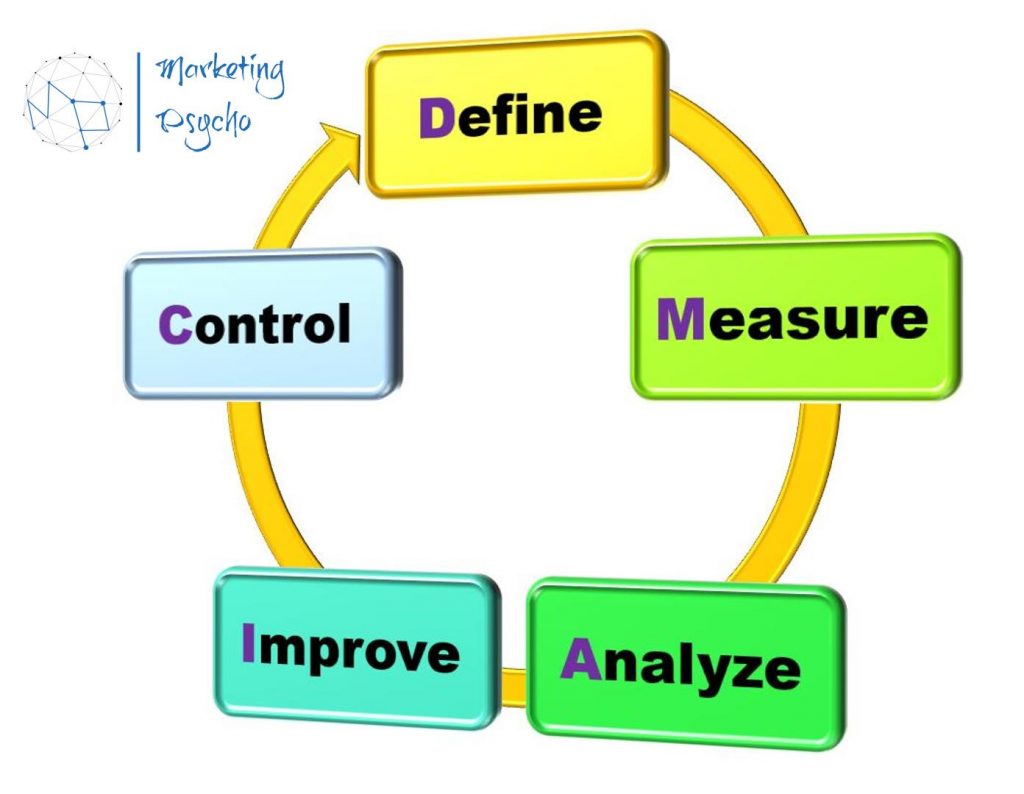Six Sigma (6σ) is a technique aimed at improving the company’s business processes and eliminating defects. Six Sigma (6σ) was developed by Bill Smith, an American specialist in the field of engineering and quality assurance at Motorola Corporation in 1986. In 1995, Jack Welch, an employee of General Electric, introduced and cultivated this model in the company’s work. Six Sigma is a registered trademark of Motorola.
Definition of Six Sigma
Sigma is the standard deviation in statistics and is denoted by the Greek letter

The term “six sigma process” comes from the notion that if one has six standard deviations between the process mean and the nearest specification limit, as shown in the graph, practically no[failed verification] items will fail to meet specifications. This is based on the calculation method employed in process capability studies. Processes that operate with “six sigma quality” over the short term are assumed to produce long-term defect levels below 3.4 defects per million opportunities (DPMO).
Above is the graph of the normal distribution, which underlies the statistical assumptions of the Six Sigma model. In the centre at 0, the Greek letter μ (mu) marks the mean, with the horizontal axis showing distance from the mean, marked in standard deviations and given the letter σ (sigma).
The greater the standard deviation, the greater is the spread of values encountered. For the green curve shown above, μ = 0 and σ = 1. The upper and lower specification limits (marked USL and LSL) are at a distance of 6σ from the mean. Because of the properties of the normal distribution, values lying that far away from the mean are extremely unlikely: approximately 1 in a billion too low, and the same too high.
Even if the mean were to move right or left by 1.5σ at some point in the future (1.5 sigma shift, coloured red and blue), there is still a good safety cushion. This is why Six Sigma aims to have processes where the mean is at least 6σ away from the nearest specification limit.
Realization of Six Sigma
To implement the Six Sigma model, a company needs the collective participation of a large number of people, each of whom is responsible for performing specific roles and responsibilities. Most often, these people are recruited from the ranks of the company and are specially trained in the necessary skills.
The distribution of roles for the realization of Six Sigma has a hierarchical structure.

Main roles are:
- Executive Leadership. These are the management and senior managers. They create the vision and mission of the Six Sigma model (concept, goals); ensure that the company’s strategic goals are aligned with those of Six Sigma; monitor results and provide appropriate resources for implementation; identify ways to fulfill the model; eliminate obstacles encountered in the implementation of Six Sigma; support the corporate spirit of the team; help select Champions, Master of Black Belts, Black Belts, Green Belts and Yellow Belts; report to executive management.
- Champions. These are representatives of Executive Leadership. They are responsible for the successful distribution of Six Sigma; select projects and develop a plan for the implementation of these projects; select the Master of Black Belts, Black Belts, Green Belts and Yellow Belts and help them (provide resources, conduct training); track key indicators and analyze data.
- Master Black Belts (MBBs). They are assigned Champions. MBBs are experienced Black Belts with teaching skills. They provide consistent application of Six Sigma in various functions; train and mentor Black, Green and Yellow Belts; advise on all questions and problems related to the application of Six Sigma.
- Black Belts. The Black Belts work under the guidance of Master Black Belts to apply the Six Sigma methodology to specific projects. Black belts are the most highly qualified specialists in the full set of Six Sigma methods and tools. They lead projects; find opportunities for successful project implementation; provide training to the project team; spread new strategies and ideas through training.
- Green Belts. Green belts are process leaders, process owners, specialists and managers with significant problem-solving skills. They analyze and solve tasks; participate in projects under the leadership of Black Belts; can lead less complex projects; conduct trainings and seminars.
- Yellow Belts. Yellow belts are employees, administrators, staff, or any other position. They support Black Belts and Green Belts projects; collect data; make simple improvements and develop opportunities.
Solving problems using the Six Sigma method requires varying degrees of skill. In Six Sigma, the highest skill level is called the Black Belts, the middle level is called the Green Belts, and the ordinary level is called the Yellow Belts.
For some companies or projects, there may be an additional division. Project Team Members are distinguished, or there are other names such as White and Orange Belts. White and Orange Belts are necessary if the project requires the use of additional units with certain knowledge.
Methodology of Six Sigma
Six Sigma projects use two methodologies based on Deming’s Plan-Do-Check-Act Cycle: DMAIC (Define – Measure – Analyze – Improve – Control) and DMADV (Define – Measure – Analyze – Design – Verify).
DMAIC is used for projects aimed at improving existing business processes.

DMAIC Consists of the Following Five Sequential Steps
- Define. At this stage, you need to understand what problem you need to solve. To do this, you must describe the current situation, define the project goals, resources for its implementation, and set the project deadlines.
- Measure. Here you should measure the key indicators of the current process. These indicators will be compared with the indicators at the end of the project to objectively determine whether a significant improvement has been achieved.
- Analyze. This stage is aimed at collecting and analyzing data to understand the root cause of the defect. To establish the root cause, you should check all the ideas about the causes of the deviations. The reason that seems to you at first glance the main one, is not always so. Only after careful selection and analysis of all the circumstances that could lead to a mismatch, you will be able to achieve the goal.
- Improve. Identify solutions to address the key root causes to eliminate and prevent process problems. Optimize the current process based on the analysis of data. Set up trial runs to establish the capabilities of the process.
- Control. At this stage, you develop plans and standardization of the improved processes. It is necessary to control and monitor the execution of this process to ensure that any deviations from the goal are corrected before they lead to inconsistencies.
DMADV (also known as DFSS – Design For Six Sigma) is used for projects aimed at creating new products or processes.

DMADV Consists of the Following Five Sequential Steps
- Define. At this stage, you should set the project goals based on the wishes of consumers. You need to know what your customer wants, and in accordance with this, develop a project.
- Measure. Identify the capabilities and characteristics of the product (process) to use and measure the achievement of goals.
- Analyze. Here you analyze the characteristics of the projected process and, based on the data obtained, develop tentative versions of the process.
- Design. At this stage, you should develop an improved and detailed version of the new product (process) and implement it.
- Verify. This is the check stage. Try your product (process) in action. Set up trial runs and test for the achievement of the set goals, taking into account the specified characteristics.
Find more analytical and strategic marketing information to improve your business performance in the corresponding sections of the website.





